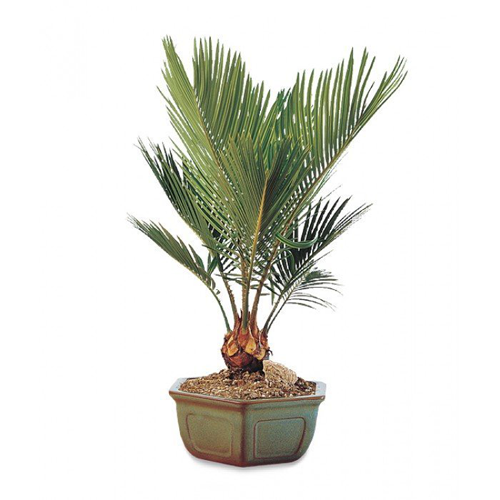
Sago Palm
Frequently bought together
SAGO PALM BONSAI
The Toronto office Sago palms bonsai plants have long and feathery fronds. However, they are not true palms. When grown indoors as bonsai plants, they will not grow tall. They are slow growers.
Their scientific name is Cycas revoluta.
How to grow Sago palms
Sago palms bonsai plants can be propagated by:
-
Division
Immediately new clusters begin to form at the base of the plant, cut them off and place them in a shade for one week in order to heal.
Fill the pot with a fast-draining mixture of sand, perlite, and peat moss. Dig a hole and place the pup in the hole with the wound side down. Water thoroughly and keep the plants in a shade until the roots start emerging.
-
Seed
In a small pot, press the seed into the soil with the flat side up. Plant one seed per pot, to give it room to grow.
Fill the soil round the seeds, water the seeds well and seal the container with plastic to create a mimic greenhouse that preserves in heat and moisture. Once the seeds germinate, remove the wraps.
Maintenance practices involved in the care of Sago palms bonsai plants
-
Lighting
Place the Toronto office sago palm bonsai in an area that receives sufficient light.
-
Watering
Mist the leaves of these plants daily. Add water when the first inch or half inch of the plant soil in the container appears dry. Supply water until it trickles through the drainage holes and the soil appears moist.
-
Fertilizer application
Feed the sago palm four times annually with a liquid fertilizer diluted to half-strength.
-
Pruning
Prune by removing the yellow, dead or brown leaves. Remove unwanted leaf stalks too by cutting near the base of the plant.
Advantages of Toronto office Sago palms bonsai plants
- First, their powder is used for many kinds of food such as meatballs and other foods that have chewy texture.
- Secondly, the stems and seeds are used in the treatment of high blood pressure, headaches and congestion.
| color |
Moss Green |
|---|








Reviews
There are no reviews yet.